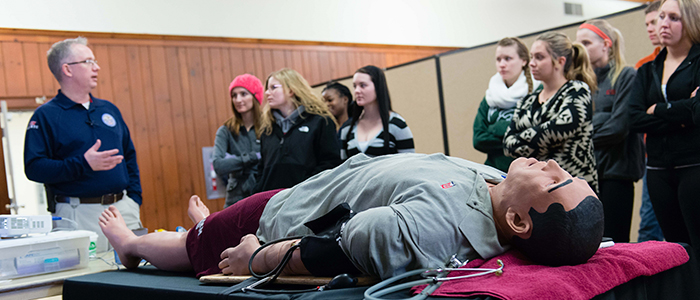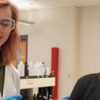ESU’s Nursing Department Schedules Specialized Training for Community Health Care Professionals, Police And First Responders on Jan. 30-31

Posted by: admin on January 31, 2014, No Comments
East Stroudsburg University students and faculty, as well as health care providers, public health professionals, police and first responders from the local community were trained at the Keystone Room on Thursday, January 30, and today on how to properly perform patient triage, decontamination, treatment and transportation so they can be fully prepared in any disaster situation, including exposure to chemical, biological, radiological, nuclear and explosive (CBNRE) weapons. Here, a trained professional helps attendees of the training session assess the extent of an individual’s injuries and the best way to care for him.
The Nursing Department at East Stroudsburg University of Pennsylvania hosted 85 individuals from the ESU campus and local communities to participate in a disaster training Thursday, January 30, and today in the Keystone Room from 8 a.m. to 5 p.m. This unique group, comprised of university students and faculty as well as health care providers, public health professionals, police and first responders from the local community, were trained on how to properly perform patient triage, decontamination, treatment and transportation so they can be fully prepared in any disaster situation, including exposure to chemical, biological, radiological, nuclear and explosive (CBNRE) weapons.
The course, offered by Texas Engineering Extension Services in conjunction with the Department of Homeland Security, consisted of facilitated discussions, small group exercises, hands-on activities and task-oriented, practical applications. Participants used state-of-the-art adult and pediatric human patient simulators to promote critical thinking skills while utilizing the RAPID–Care concept. Upon course completion, participants will be able to demonstrate the skills necessary for proper detection and monitoring, triage, mass decontamination, treatment, stabilization, self-protection and cross-contamination prevention.




